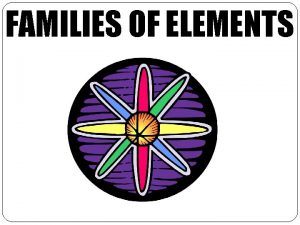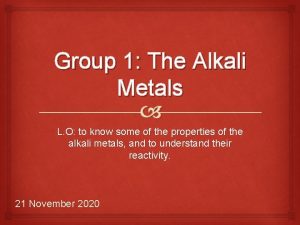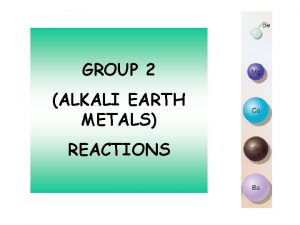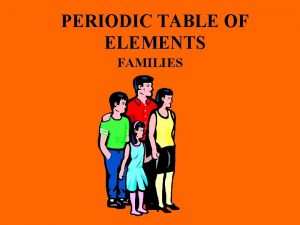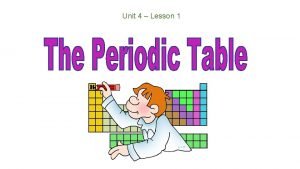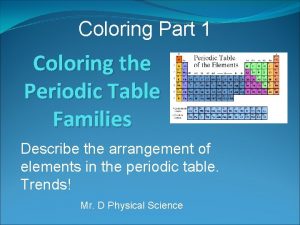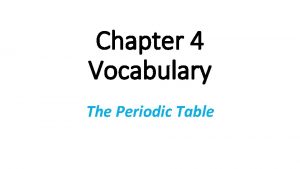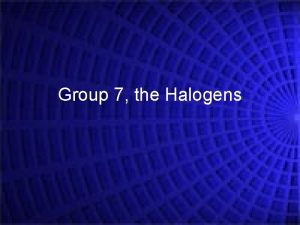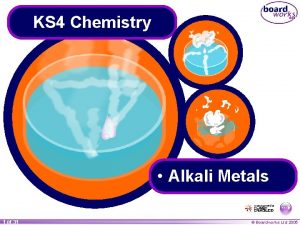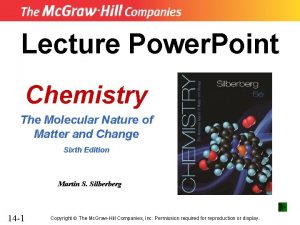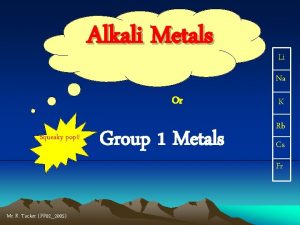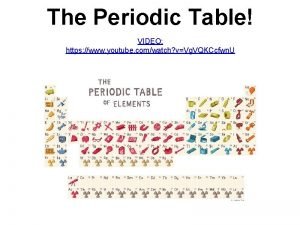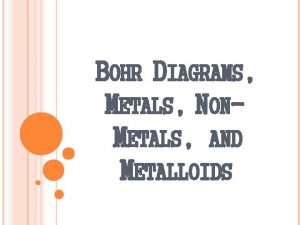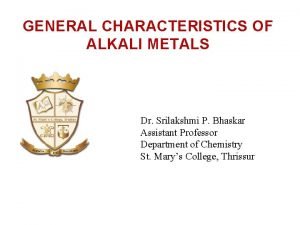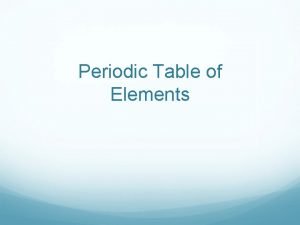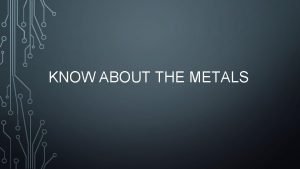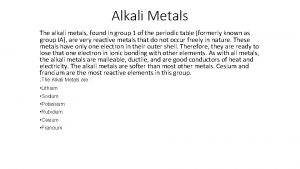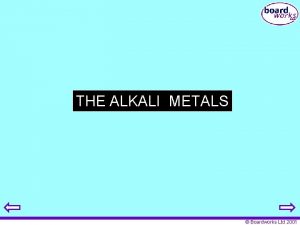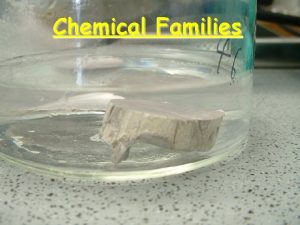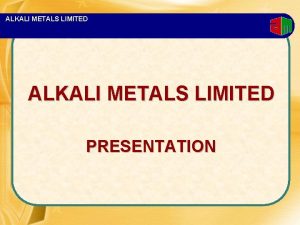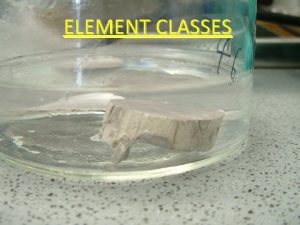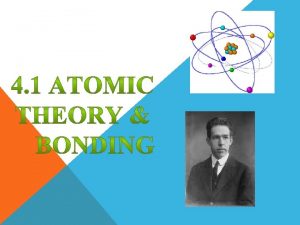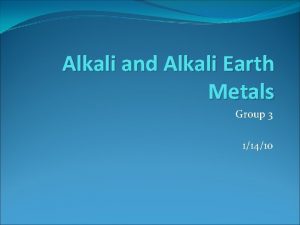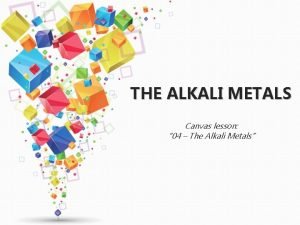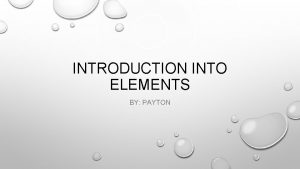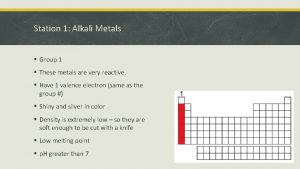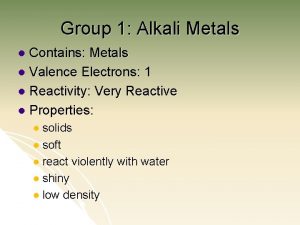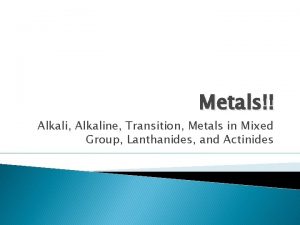Group 1 The Alkali metals Group 1 The
















- Slides: 16


Group 1 – The Alkali metals

Group 1 – The Alkali Metals 1. They are all shiny metals which are easily cut with a knife. 2. They all have 1 valence electron 3. They are all extremely reactive and have to be stored in oil to prevent them from reacting with the oxygen in the air.

Demonstration – The reaction of the alkali metals with water 1 – The reaction of lithium with water https: //www. youtube. com/watch? v=m 55 kgy Ap. Yr. Y 2 – The reaction of sodium with water 3 – The reaction of potassium with water

Group 2 – The earth alkali metals Includes the following elements: Beryllium (Be) Magnesium (Mg) Calcium (Ca) and others! • They are all metals • All of the elements in group one have two electrons in their outermost shell! • They are reactive- They have a tendency when reacting with outer elements to lose these outer electrons and form ionic compounds • They react less vigorously with water to produce hydrogen

Group 2 – The Alkaline Earth Metals 1. They all have 2 electrons in their outer shell 2. They are reactive but not as reactive as the alkali metals

Groups 3 -11 The d block metals Includes the following elements: Scandium (Sc) Titanium (Ti) Vanadium (V) Chromium (Cr) Manganese (Mn) Iron (Fe) They are all metals and are usually brightly colored and act as catalysts for chemical reactions Cobalt (Co) Nickel (Ni) Copper (Co) Zinc (Zn) and others!

Group 13 • All have 3 electrons on their outermost shell!

Group 14

Group 15

Group 16 • All have 6 electrons on their outermost shell! • All of the group are metals except for Polonium which is a metal

Group 17 - The Halogens • Non metals • 7 electrons in their valence shell • Very reactive - They have a tendency when reacting with outer compounds to gain one electron

Group 17 - The Halogens Chlorine gas Bromine iodine

Group 18 - The Noble gases • non metals • 8 valence electrons- which makes them chemically stable • Odorless and colorless gases • Unreactive

Group 18 - The Noble gases Helium gas

The odd one out. . Hydrogen
 Elements in group 1
Elements in group 1 Group 1 elements
Group 1 elements Metal and water reaction
Metal and water reaction Characteristics of alkali
Characteristics of alkali Alkali metals reacting with water
Alkali metals reacting with water Periodic table color coded
Periodic table color coded Alkali metals periodic table
Alkali metals periodic table Youtube alkali metals
Youtube alkali metals Halide meaning
Halide meaning Lithium react with oxygen equation
Lithium react with oxygen equation Alkali metals reacting with water
Alkali metals reacting with water Youtube.com
Youtube.com Youtube brainiac alkali metals
Youtube brainiac alkali metals Alkali metals bohr diagrams
Alkali metals bohr diagrams Order of mobility of alkali metal ions
Order of mobility of alkali metal ions Alkali metals periodic table
Alkali metals periodic table Fun facts about alkali metals
Fun facts about alkali metals
